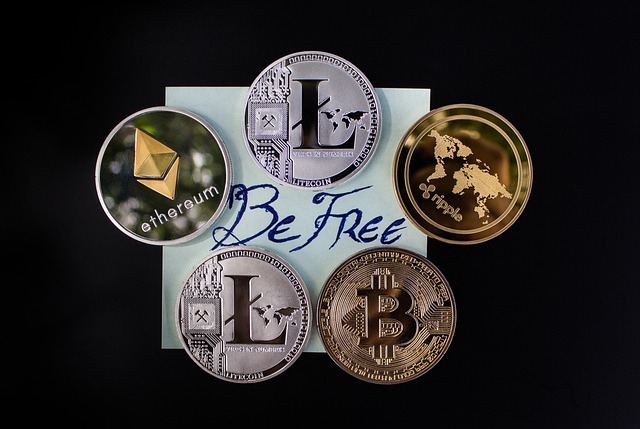Decentralized Finance (DeFi) lending platforms, powered by blockchain and smart contracts, are transforming traditional finance by offering a peer-to-peer model for crypto liquidity. Users can deposit, borrow, and trade cryptocurrencies directly without intermediaries, enhancing efficiency, transparency, and security. DeFi provides individuals with greater control over their digital assets, access to higher interest rates, passive income opportunities, and global financial inclusion. However, significant risks such as technical glitches, smart contract vulnerabilities, and cryptocurrency market volatility must be considered. Popular platforms like Aave, Compound, and MakerDAO cater to diverse user needs, leveraging multi-blockchain support, stablecoins, and collateral-backed systems to attract a growing crypto-savvy user base seeking alternative investment opportunities.
Discover the innovative world of decentralized finance (DeFi) lending platforms, revolutionizing global financial systems. This article breaks down the fundamentals of DeFi lending, demystifying its core concepts for crypto enthusiasts and newcomers alike. We explore how crypto liquidity basics apply to this emerging ecosystem, highlighting benefits like accessibility and transparency while also examining risks such as volatility. Get ready to delve into popular DeFi protocols and their unique features, empowering you with knowledge in this dynamic space.
- Understanding Decentralized Finance (DeFi) Lending Platforms
- How Crypto Liquidity Basics Apply to DeFi Lending
- Benefits and Risks of Utilizing DeFi Lending Platforms
- Exploring Popular DeFi Lending Protocols and Their Features
Understanding Decentralized Finance (DeFi) Lending Platforms

Decentralized finance (DeFi) lending platforms are revolutionizing traditional financial systems by offering an innovative approach to accessing and managing crypto liquidity. Unlike centralized banks or financial institutions, DeFi platforms operate on blockchain technology, creating a peer-to-peer network that allows users to lend and borrow cryptocurrencies directly from one another. This decentralized model removes intermediaries, making the process more efficient and accessible.
At the core of DeFi lending is the concept of smart contracts, which automatically execute and enforce loan agreements without the need for intermediaries. These contracts ensure transparency, security, and trust within the system, enabling users to participate in crypto lending with greater flexibility and control over their assets. By harnessing blockchain’s power, DeFi platforms provide a basic understanding of crypto liquidity, allowing individuals to tap into the potential of their digital assets and explore new financial opportunities.
How Crypto Liquidity Basics Apply to DeFi Lending

In the realm of decentralized finance (DeFi), lending platforms operate on the foundational principles of crypto liquidity basics. These platforms facilitate borrowing and lending activities by leveraging blockchain technology, ensuring transparency and security. Crypto liquidity refers to the availability of digital assets to meet market demand, a concept that is both crucial and unique in DeFi lending. Users deposit their cryptocurrencies into these platforms, providing liquid assets that can be borrowed by others seeking funding for various projects or needs. This dynamic creates a self-sustaining ecosystem where crypto holdings serve as collateral, enabling seamless borrowing and repaying processes.
DeFi lending platforms further enhance crypto liquidity basics through innovative mechanisms like automated market makers (AMMs) and decentralized exchanges (DEXs). AMMs ensure that there’s always an equal supply of assets available for trading, maintaining balanced prices. DEXs allow users to exchange cryptocurrencies directly from their wallets, increasing overall market liquidity. This interconnectedness fosters a robust environment where borrowers access funds promptly, while lenders enjoy competitive returns on their crypto holdings, marking a significant departure from traditional financial systems.
Benefits and Risks of Utilizing DeFi Lending Platforms

Decentralized finance (DeFi) lending platforms offer a revolutionary approach to traditional banking, providing users with increased access to crypto liquidity basics and financial services without intermediaries. One of the primary benefits is the potential for higher interest rates compared to conventional lenders, as well as the ability to earn passive income by staking or locking up cryptocurrencies. DeFi platforms also promote financial inclusion, allowing individuals worldwide to participate in lending and borrowing activities, regardless of their geographic location or credit history. This democratization of finance has fostered a vibrant ecosystem where users can directly interact with each other, cutting out the need for centralized authorities.
However, alongside these advantages, there are significant risks to consider. DeFi lending platforms operate on blockchain technology, making them susceptible to technical glitches, smart contract vulnerabilities, and cyberattacks. The lack of regulatory oversight means there’s often limited recourse for investors who suffer losses due to these issues or fraudulent activities. Additionally, the volatility inherent in cryptocurrency markets exposes borrowers to fluctuating interest rates and potential debt spirals if they are unable to repay their loans on time. As such, while DeFi offers promising opportunities, users must carefully weigh the benefits against the risks involved.
Exploring Popular DeFi Lending Protocols and Their Features

In the realm of decentralized finance (DeFi), lending platforms have emerged as a popular way to harness crypto liquidity basics. Among the most prominent DeFi lending protocols are Aave, Compound, and MakerDAO. Each offers unique features catering to various user needs. For instance, Aave allows users to borrow and lend assets across multiple blockchains, providing flexibility and accessibility. Compound focuses on stablecoin lending, ensuring low volatility and offering attractive interest rates. MakerDAO, with its stablecoin system backed by collateral, provides a secure lending environment.
These platforms facilitate peer-to-peer borrowing and lending without intermediaries, allowing users to gain exposure to diverse asset classes and earn competitive returns. They leverage smart contracts for automation, ensuring transparent and auditable processes. Additionally, DeFi lending protocols often include features like overcollateralization options, which enhance borrower credibility and attract lenders with higher risk tolerance. This innovative approach has attracted a growing user base seeking alternative investment opportunities in the crypto space.
Decentralized finance (DeFi) lending platforms have emerged as a revolutionary force in the crypto space, offering alternative financing solutions beyond traditional banking. By leveraging blockchain technology and smart contracts, these platforms enhance financial inclusion while providing users with increased transparency and control over their assets. Understanding the fundamentals of DeFi lending, such as crypto liquidity basics, is crucial for navigating this evolving landscape. While DeFi offers numerous benefits like high-yield savings and borrowing opportunities, it also carries risks associated with volatility and security concerns. Exploring popular DeFi protocols reveals a diverse array of features catering to various user needs. As DeFi continues to gain traction, staying informed about its intricacies, including crypto liquidity dynamics, is essential for both early adopters and those curious to participate in this transformative financial revolution.
